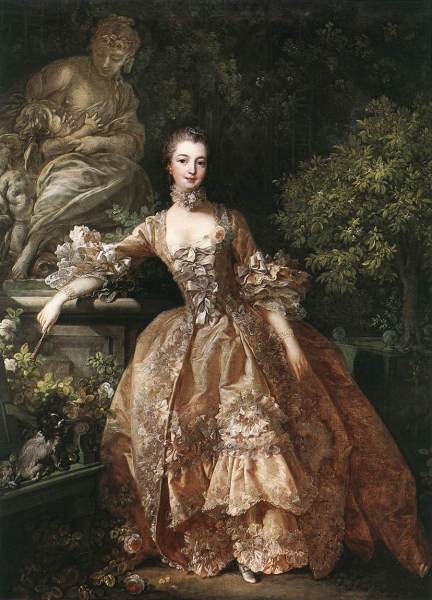
ABSOLUTE POWER: Cardinal de Richelieu, oil on canvas, 1633-40 by Philippe de Champaigne.
Image: © Copyright The National Gallery, London 2015
“I have the consolation of leaving your kingdom in the highest degree of glory and of reputation”, the dying Richelieu wrote to Louis XVIII, father of Louis XIV. The foundations of French gloire in the reign of the Sun King were laid by Richelieu. He wears Cardinal’s Robes of pink, the liturgical colour of rejoicing in God.
 REAL ESTATE, SEX AND FASHION POWER in one woman: Mary, Countess Howe by Gainsborough, oil on canvas, 1764.
REAL ESTATE, SEX AND FASHION POWER in one woman: Mary, Countess Howe by Gainsborough, oil on canvas, 1764.
Iveagh Bequest, Kenwood House, London. Image: WGA
This exquisite incarnation of 18th century elegance and aristocracy was the wife of a gouty admiral. She had been born into a wealthy, landowning family and was co-heiress with her sister of their father’s substantial property; her marriage brought her into the aristocracy when her husband inherited the title of Viscount.
She is pretty and formidable, sensually alluring and untouchable. The love with which Gainsborough imbues her portrait and the poetically moody sky is thought by art historians to not be an entire illusion, as he was known to become sexually attracted to his good-looking female sitters, a professional hazard for many portraitists of all epochs.
In the same year Gainsborough painted Mary Howe, on the other side of the Channel, the woman who had redefined, owned and commercialized pink, the king’s mistress and unofficial cultural minister of France, Madame de Pompadour, died.

Madame de Pompadour by Boucher, 1759. Wallace Collection, London. Image: WGA
SELF-MADE POWER: elegant, gentle, carnal yet intangible, suggestible but not forceful – this is the quintessentially feminine power of influence crafted by the woman herself.
Such a soft, shell-like pink reminiscent of idealized human flesh tones, is flattering next to a middle-aged woman’s skin, but it is also suggestive of the colour of the sky when the sun rises and sets, and, in the iconography of her relationship with Louis XV, the sun god was the symbol of her lover and master, the king. Her favourite portraitist Boucher, was the genius and pander of pink.
 CELEBRATION OF PINK POWER: Marilyn Monroe singing “Diamonds are a Girl’s Best Friend” in the pink satin dress designed by Travilla, Gentlemen Prefer Blondes, 1953. Image: Wikipedia
CELEBRATION OF PINK POWER: Marilyn Monroe singing “Diamonds are a Girl’s Best Friend” in the pink satin dress designed by Travilla, Gentlemen Prefer Blondes, 1953. Image: Wikipedia
Blatant materialism and feminine predatory sexuality find absolution in pure, sweet, shocking pink celebration of being alive.
Marilyn is the girl whose faults we all forgive.
Pink is the colour of joy.



